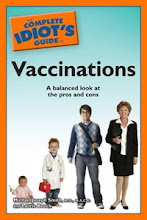"Hispanics and African Americans are about 2.5 times as likely as whites to put off prenatal care until the third trimester or to get no prenatal care at all," explains TIME Magazine writer Bonnie Rochman on the text4baby website. "But they are likely to be avid texters." Since 91% of Americans own cellphones, according to the wireless association CTIA, text messaging is an effective way to reach these women.
To register for this free program, participants simply text "Baby" or "Bebe" (for the Spanish version) to 511411. Once registered, they receive three text messages a week, covering relevant health topics such as prenatal care, vaccines, breastfeeding, mental health, and car seat safety.
Text4baby is an unusual public/private partnership, whose motley crew of partners include (but are not limited to) the mobile technology firm Voxiva, the health insurance company WellPoint, the U.S. Department of Health and Human Services (whose secretary, Kathleen Sebelius, just criticized WellPoint for canceling the policies of women with breast cancer), and MTV Networks (producers of the disturbing reality show 16 and Pregnant).
Voxiva is a veteran at text-messaging health campaigns, primarily in international settings. The Washington Post's Mike Musgrove explains that:
Voxiva has launched about 150 health-related text-message services around the world, mainly in developing countries where access to doctors is scarce. Such projects, typically underwritten by governments or pharmaceutical firms, have often been used as a tool to disseminate news about treating diseases such as diabetes or AIDS.So will the text4baby program really improve maternal and infant health among the participants? It's too soon to know, but I'm curious to find out. If it does, other health-related text messaging campaigns will surely follow, as the federal government focuses on prevention and wellness to offset the cost of health care reform.



